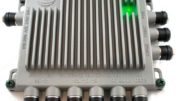I first wrote this article about six years ago. Believe it or not, this rumor has legs! It’s still out there, so I decided to update the article for 2021 and beyond.
OK, for those who aren’t total satellite geeks– DIRECTV uses two broadcast frequencies for its satellite transmissions. There’s the Ku band at 12-18 GHz, and the Ka band at 26.5-40 GHz. When they originally started in 1994, the Ku band was the only one used and the Ka band was added when DIRECTV needed extra capacity to add HD channels. Since then, there’s a rumor that DIRECTV will stop broadcasting on the Ku band. The original rumor said it would happen in 2019, but AT&T has been slow to pull the plug on standard definition. Now you hear a lot that it will be this year.
That rumor is wrong in a whole bunch of ways, so let’s take them one at a time.
The current fleet of Ku satellites is still kicking
AT&T recently made plans to retire one satellite at the 119 location and moved one from the 101 location to cover for it. This satellite still has several years of life on it. More importantly, AT&T’s T15 (or DIRECTV15 as it was originally known) and T16 satellites have Ku-band transponders and they could last for a decade or more. These satellites are still very new. T16 is in the 101 location where its Ku transponders are usable by regular folks. T15 is in the 103 degree location. DIRECTV customers with regular dishes can’t use Ku programming at that location, so it’s not clear what those transponders are for. But, they are there nonetheless.
If DIRECTV wanted to do this, they would have to replace every dish in use today.
I mean every single dish, period. That’s got to be about 30 million dishes, and let’s say with labor and parts you’re talking $200 per dish. As you can see this is not a terribly attractive proposition.
DIRECTV’s Ku-band licenses are still good.
Seriously, why would they give up on Ku-band broadcasting when there’s no need for it? Those licenses cost millions of dollars to get and they’re non-refundable. DIRECTV would have to wait until those licenses came up for renewal (which you’d think would be something you could find out, but I can’t find that date) and then… not renew them.
Not to mention…
DIRECTV is still pumping out standard definition service to millions of receivers in commercial establishments, hotels, restaurants, and the like, and all those receivers would have to be replaced too. This was true five years ago and believe it or not it’s still true today. AT&T won’t activate a new standard definition receiver but there are still a lot of folks who use the ones they have. RV and marine customers use them too.
Look, I’m not saying it’s never happening.
There could come a point ten or more years down the line where there isn’t a need for that sort of bandwidth and all the satellites are aging and no more get launched. But that’s a long way away. Honestly DIRECTV started broadcasting HD service in earnest in 2007 and here we are years later and they still broadcast SD. Getting rid of SD is an incredibly slow process and not likely to get faster, because of the immense cost involved. The best strategy, which DIRECTV is doing, is to incentivize people to go all HD and upgrade to the latest stuff, and sooner or later you’re down to just a few hundred thousand people with SD and then you deal with it.
So how did this rumor start?
Most likely, the rumor originated because DIRECTV’s own installers won’t put a round dish up for a new customer. They won’t put in an SD receiver in for a new customer either. This leads installers to think that the underlying technology of those older items was being phased out. What they didn’t think about is that all receivers use at least some of the Ku bandwidth at the original 101 degree location. Phasing that out would take replacing… literally everything.
Oh one more thing…
If you want the latest in satellite TV equipment, there’s one place to go. SolidSignal.com has everything you need and they graciously support this blog. Shop at our all new web site and get everything to help you live your best digital life.




